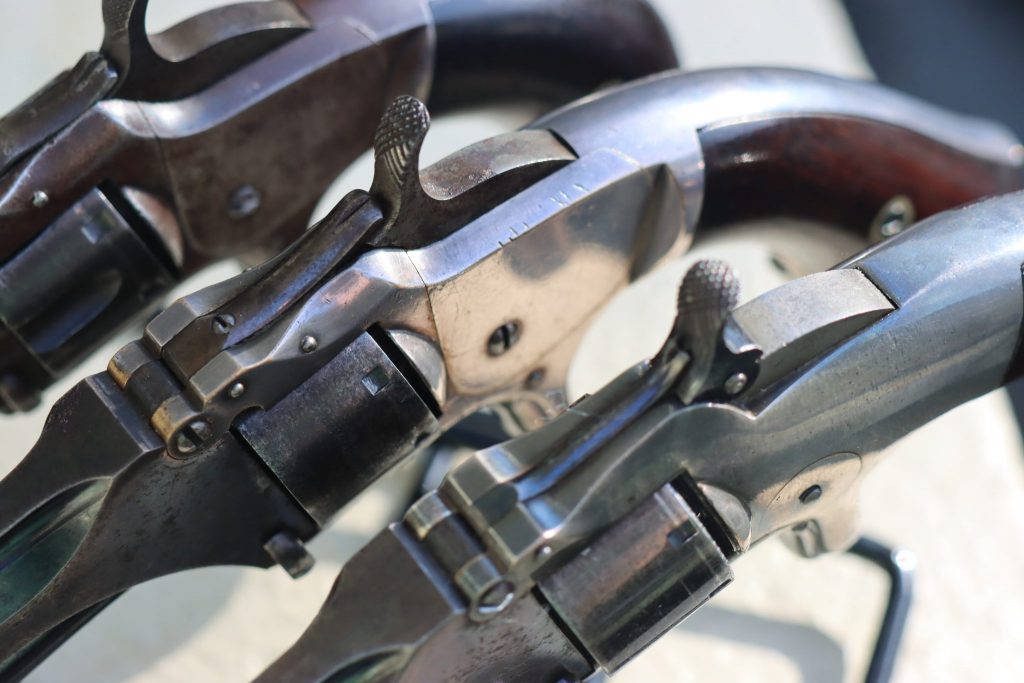There were three issues of the Smith & Wesson Model 1. The 1st Issue Model 1 was made from 1857 to 1860 and was the company’s first attempt at a cartridge load revolver. The 2nd Issue was a slightly altered design of the 1st Issue that was produced from 1860 to 1868. The 3rd Issue was a completely restyled Model 1 that was made from 1868 to 1882.
The guide below will use the grip, the side plate, the cylinder, and the barrel to correctly identify a Model 1.
Grip
The Model 1 had two different styles of grip.
The 1st and 2nd Issue guns have the flared grip. This was a popular style of gun grip in the 1850’s, and it followed the pattern of the earlier Volcanic magazine pistol and the Colt percussion revolvers that came prior.
The 3rd Issue was a restyled gun that features the birds head grip. More comfortable in hand and easier to draw, this grip design persisted well into the late 19th century, and it formed the basis for the round butt grip that can still be found on many Smith & Wesson revolvers.
Side Plate
The 1st Issue side plate is circular in shape, and it was held in place by a single screw that was inserted through the gun’s right side and was threaded into the side plate.
The 2nd and 3rd Issue side plates are irregular in shape. They were also held in by a single screw, but it was inserted on the left side (through the side plate).
Cylinder
The 1st and 2nd Issue guns have the non-fluted (or smooth) cylinder.
The 3rd Issue guns have fluted cylinder. This was part of the restyling effort that Smith & Wesson undertook to help the Model 1 maintain market share.
Note: it’s possible to find a Model 1 with the wrong cylinder. This is, sadly, not uncommon, since the cylinder was a particularly fragile component that was prone to loss and breakage. In my discussion about assembly marks below, I’ll show you how to ensure that your Model 1’s cylinder is correct for that particular gun.





